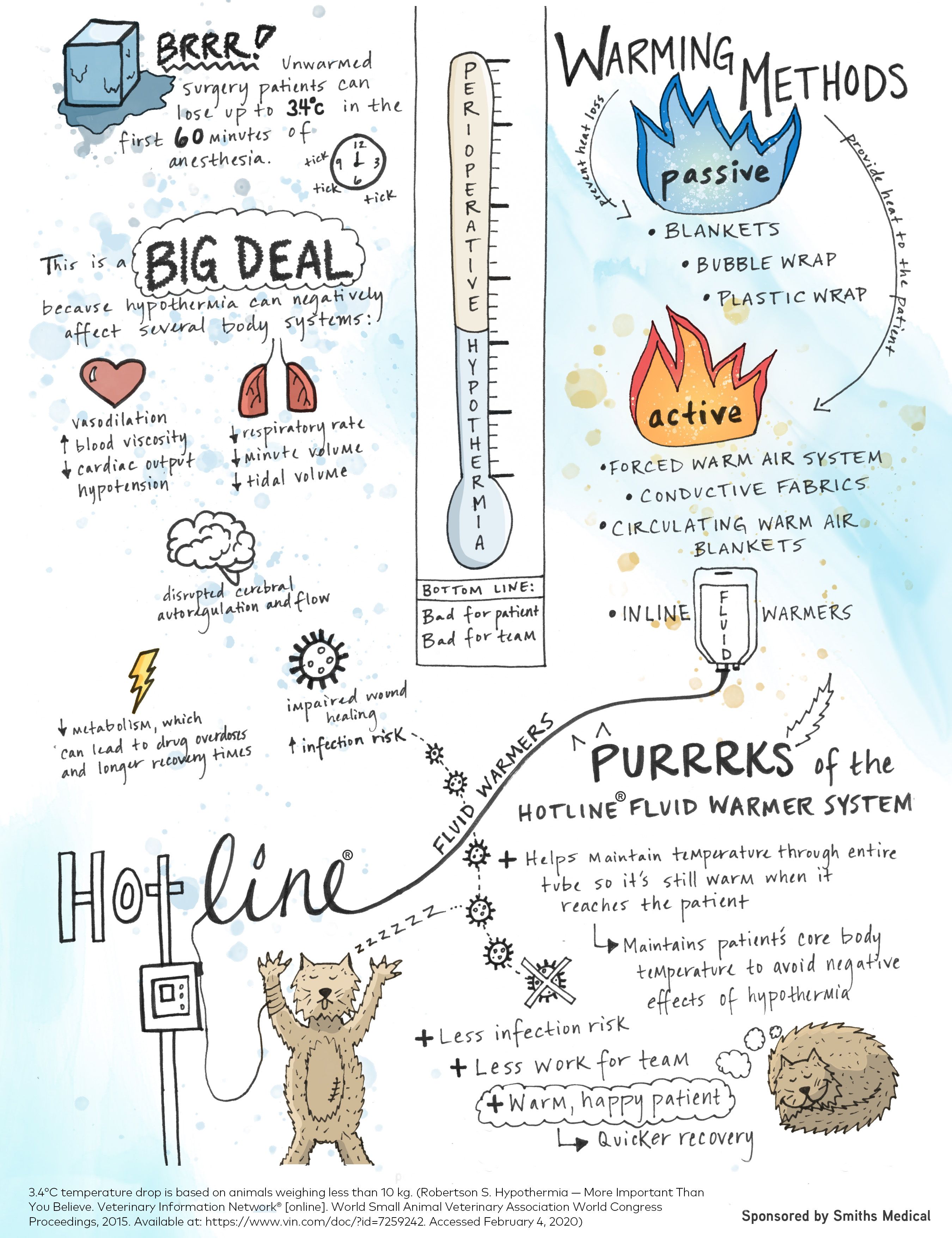Doodle: Prevent perioperative hypothermia by bringing the heat to the surgical suite
When your patient's chills are multiplying during surgery, it can lead to a long list of problems, including a higher risk of infection and a longer recovery time. Here's how you can heat things up.
Helping your patients lose their cool is a vital part of caring for them during surgery. When a patient is induced, vasodilation allows warm blood from its core to cool down as it flows through the periphery. If your patient becomes hypothermic, several body systems can be negatively affected. For example, perioperative hypothermia can decrease metabolic function, which can prolong recovery time. The patient's immune system can also take a hit, leaving it at an increased risk of infection.
Warming methods include both passive and active options. Passive methods prevent heat loss and include items like blankets and bubble wrap. Active methods like conductive fabrics, circulating warm air blankets and inline fluid warmers provide heat to the patient.
To learn more about the dangers of perioperative hypothermia and the different warming options available — especially the Hotline® Fluid Warmer System by Smiths Medical — download this doodle and then put the heat on your surgical patients.
